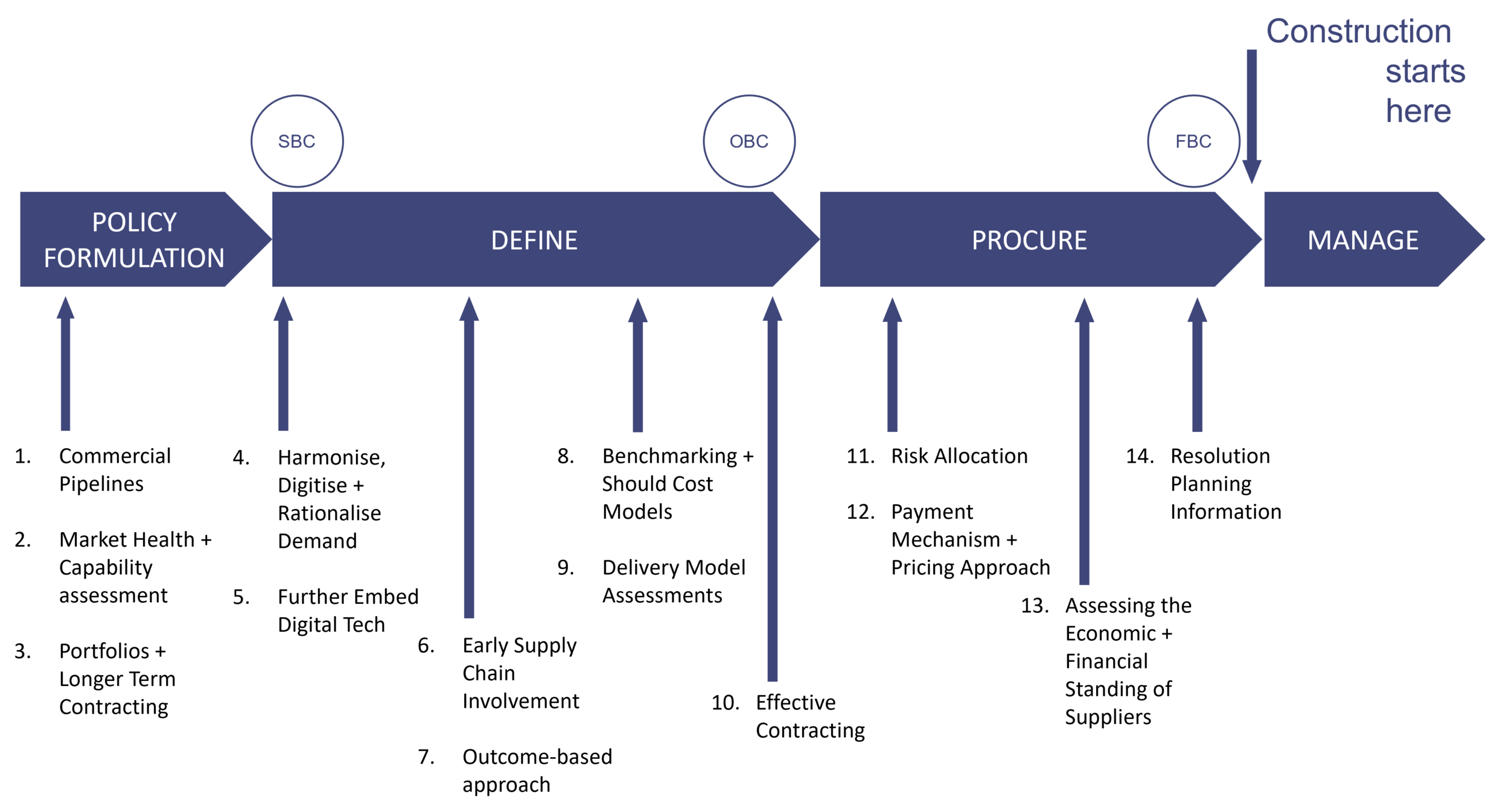A new direction in the construction industry
Virginia Muñoz Rucián
Project Manager
02 August 2021
These past couple of months I have been diving into policy papers, white papers, webinars and online forums, to get a good understanding of the new trends in construction project delivery.
As part of my job as a consultant project manager in the construction sector, I need to be on top of the curve of the trends to be able to advise clients on better ways to deliver projects with the aim of maximising outcomes with optimum spend of resources.
Despite the well-known challenges the construction industry faces, such as low productivity and limited level of sustainability, the sector is finding ways to improve and embrace change.
This is at the core of the Construction Playbook and Project 13. Often cited but not always fully understood, these commercial frameworks are a lot more common than you might expect. The Construction Playbook was published December 2020, and has been developed over several months with industry and government collaborating through weekly workshops with Dale Evans, chair of Project 13. As well as aligning with the overall Project 13 approach, the Project 13 principles are recommended in several places of the 14 mandated Construction Playbook policies.
Both commercial frameworks have many common themes and gather industry best practice to be applied by the public sector, with the aim of cascading change into the supply chain. To illustrate the impact this has on the supply chain, below is an example of how the Construction Playbook procurement timeline fits with business case milestones.
Figure 1: The Construction Playbook procurement timeline and Business case milestones
Key Similarities
At a high level there are similarities in what the two strive to achieve:
Defining outcome-based contract specifications should be at the core of infrastructure procurement leaving behind the concept of scope-based competition.
Developing stronger and longer relationships with the supply chain, reinforcing collaboration and moving away from confrontation.
Further embedding digital technologies, modern methods of construction and supporting the adoption of the Information Management Framework and the creation of the National Digital Twin.
Cost models based on a robust benchmarking to better understand whole life cost, project value and monetisation of benefits.
Better allocation of risk between the sector and public buyers to mitigate risk being inappropriately managed or passed down the supply chain.
Key Differences
Although these two commercial frameworks share the same aim to embed a new approach to the procurement and delivery of construction projects and programmes, there are some crucial differences between them. Whilst Construction Playbook enables and encourages project collaboration, Project 13 brings this to the next level and challenges organisations to aim to integrate core functions of infrastructure owners with the capabilities of their advisors and suppliers. The “enterprise model” is at the core of the Project 13’s new approach, which can range and evolve from simple collaboration into a high performing enterprise depending on the maturity of the organisations and the complexity of the projects and programmes. Below is a basic enterprise structure that can be applied to any project to help achieve high performance.
Figure 2: Project 13 Enterprise roles
Most of the above-mentioned themes are focused to get things right from the start and involving the supply chain from the earliest stages of the project planning. To make suppliers get on board with this industry transformation, transparent and purpose-driven procurement processes are key and this can only be achieved by working with a common goal; maximising end-user outcomes commercially linked to all parties in the project delivery team.
Anturas works with Clients right at the concept stage of the project planning, guiding them on this crucial task of outcome definition and ensuring key infrastructure projects are aligned with the nation’s aim to build better, faster and greener. Please don’t hesitate to get in touch if you would like to discuss how the Construction Playbook or Project 13 can benefit your project.




